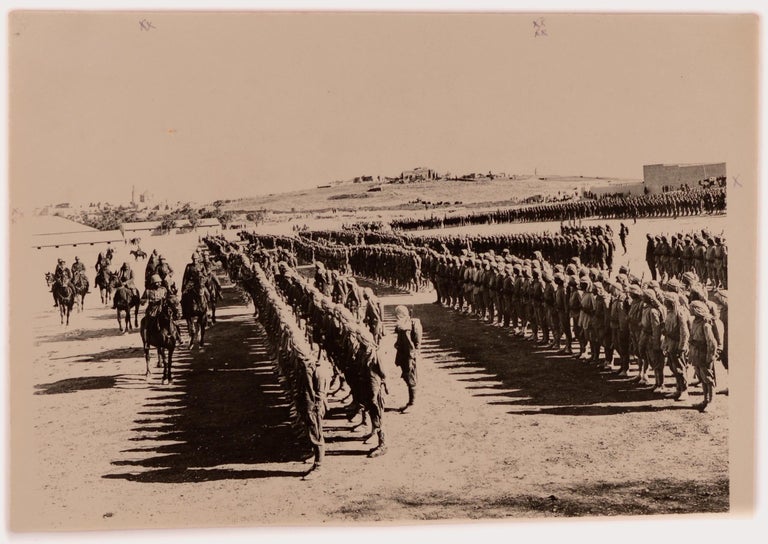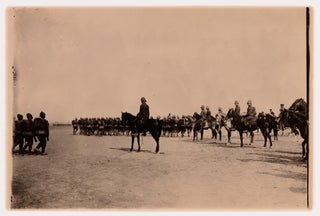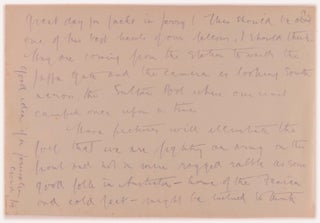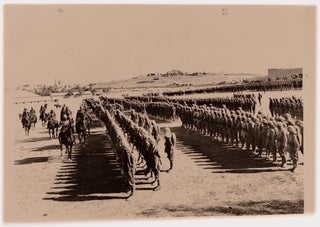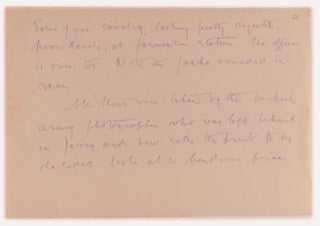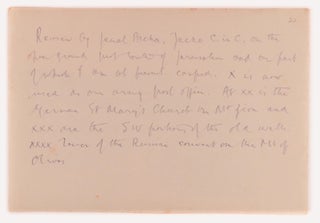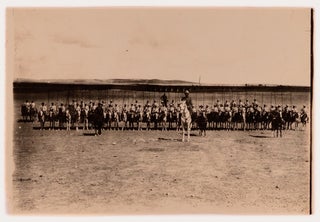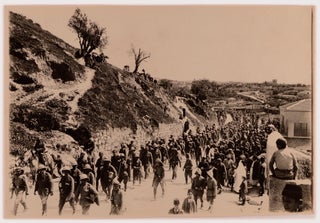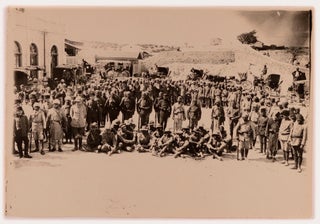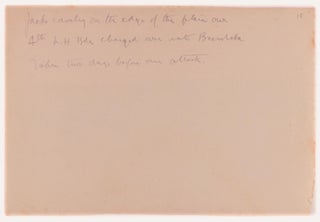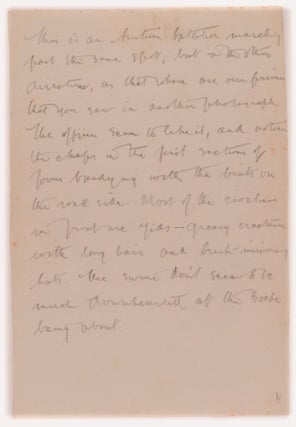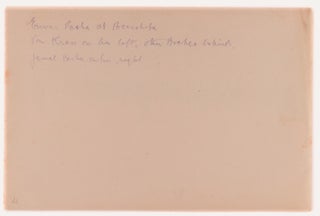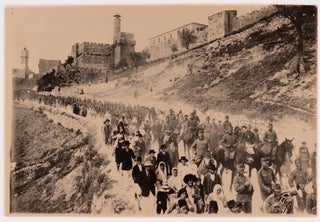Six vintage gelatin silver photographs (each 120 × 177 mm) taken before the fall of Jerusalem on 9 December 1917
Lengthy captions in pencil on the verso of each photograph are most illuminating, not least because they were inscribed by an Australian soldier in Jerusalem shortly after the fall. He is possibly a member of the 4th Light Horse Brigade, and accordingly a veteran of the famous charge at Beersheba (see below). One of his most important observations is that the photographs were produced by 'the Turkish army photographer who was left behind in Jerry and now sells the prints to us deluded fools at a bondman price'. These comments are among others written on the verso of a photograph of Australian prisoners of war: 'Some of our cavalry, looking pretty dejected, poor devils, at Jerusalem Station. The officer is ours, too. Note the jacko wounded in the rear'. We have traced only one other example of five of these photographs (albeit cropped differently), and two different variants of the sixth, in two named collections in the Library of Congress. The main repository is a pair of albums compiled by John Whiting (image numbers 75, 87, 116 ['Australians captured at Shellal'], 151, 179, and 205 [a variant image]; all of these prints are of an image a centimetre to the right and a centimetre lower than the six on offer). The source of the other variant image is the G. Eric and Edith Matson Photograph Collection. An informative (but not entirely accurate) online article by Issam Nassar, 'John Whiting's Album of the Great War in Palestine', gives details of Jerusalem's American Colony and the photography department it opened in 1898; 'Whiting, along with others including Eric Matson, was one of its leading photographers ... [and Whiting] might be the one who shot most, if not all, of the photographs in the albums'. The captions on this small group of photographs tell a different, more complete, and much more nuanced, story. For example, Whiting's prosaic caption on his number 179, '6th Cavalry Squadron', is more accurately described thus: 'Jacko cavalry on the edge of the plain our 4th L.H. Bde charged over into Beersheba. Taken two days before our attack'. Whiting has on number 205 'Last review by Jamal [sic] Pasha & Von Kress in Jer.', while our almost 70-word account commences with 'Review by Jemal Pasha, Jacko C. in C. on the open ground just south of Jerusalem and on part of which I am at present camped. X is now used as our army post office ...'. All in all, the annotations run to nearly 340 words, not all of them complimentary, no matter what the nationality. In one instance, he writes that 'These pictures will illustrate the fact that we are fighting an army on this front and not a mere ragged rabble as some good folk in Australia - home of the Fenian and cold feet - might be [tempted?] to think'. The photographs are clearly rare by any definition; these unvarnished observations make them uniquely desirable.
Item #100971
Sold

